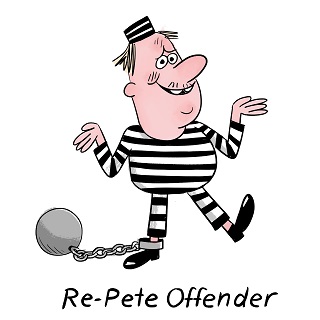Felony Sentencing
Home – Practice Areas – Blogs - Felony Sentencing
Felony Sentencing in Minnesota – Part I: Indeterminate vs. Determinate
When the Minnesota Legislature enacts a new criminal law, italso sets the sentencing level for that crime. For example, Minnesota Statutes § 609.582, subd. 1 not only describes the conduct that constitutes first-degree burglary, it also states that first-degree burglary is a felony that carries a maximum penalty of up to 20 years in state prison. But the terms of a felony sentence imposed in Minnesota often vary widely from other states that use a different sentencing structure.
Each state has developed its own felony sentencing system to guide courts, parole boards and corrections departments on how best to carry out punishments authorized under their criminal codesandstatutes. These systems also determine which offenders are eligible for community placement, local jail or state prison, and how long offenders should remain incarcerated or placed on supervised release.
34 states have adopted an indeterminate sentencing system. Here, state legislatures assign broad sentencing ranges which allow judges to decide which sentence will best fit the facts and circumstances surrounding each individual case and offender.
Proponents of indeterminate sentencing maintain that it provides an opportunity for each offender’s rehabilitation with periodic review of individual progress. In most indeterminate sentencing jurisdictions, a parole board determines whether the offender has ‘earned’ his or her release by serving sufficient time in prison (usually a minimum period of incarceration) and demonstrating to the board that he or she can safely be released on parole.
The remaining 16 states, including Minnesota, utilize some form of determinate sentencing. Under this system, an offender is sentenced to a specific ‘fixed’ sentence. Consequently, these states lack parole boards and do not provide for discretionary ‘time off’ an offender’s sentence for good behavior.
All Minnesota inmates serving prison time are entitled to good time, which will reduce the term of incarceration by one day for every two days of good behavior. Earned good time is not discretionary and, once vested, cannot be taken away for misconduct. However, future good time may be restricted upon conviction for disciplinary violations committed while the offender is incarcerated.
For example, a felony offender in Minnesota with an executed sentence of three years in prison could expect to serve a fixed sentence consisting of two years of incarceration and, with accrued good time, one year on supervised release under terms set by the court.
Supporters of determinate sentencing point to the certainty in the amount of time an offender would expect to serve, better proportionality of sentences relating to the severity of the crime, and the reduction of disparities that can arise when sentences are indeterminate.
Felony sentences in Minnesota are calculated using the Minnesota Sentencing Guidelines. Following the implementation of the Guidelines in 1980, Minnesota’s Parole Board was abolished in 1982.
In Part II of Felony Sentencing in Minnesota we’ll look at the Sentencing Guidelines in greater detail.
If you find yourself facing serious criminal charges and a lengthy sentence, you need a criminal defense attorney with deep legal knowledge and a willingness to fight on your behalf in any court. At Halberg Criminal Defense, our team approach puts the firm’s collective knowledge and experience in your corner. Our attorneys are available 24-7 — Call us at 612-DEFENSE (612-333-3673).

















